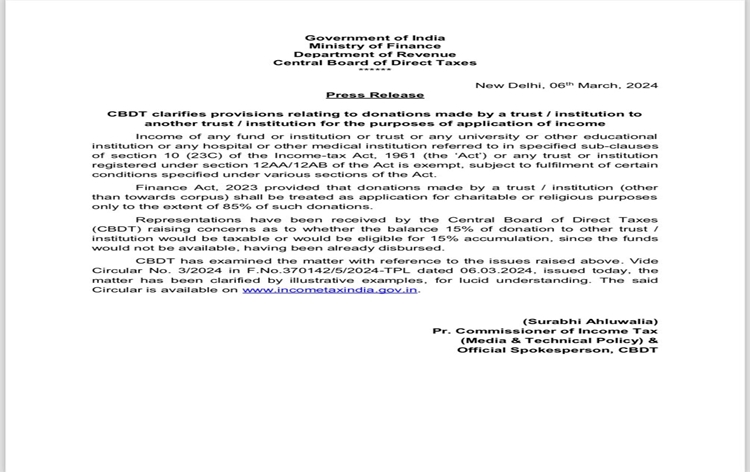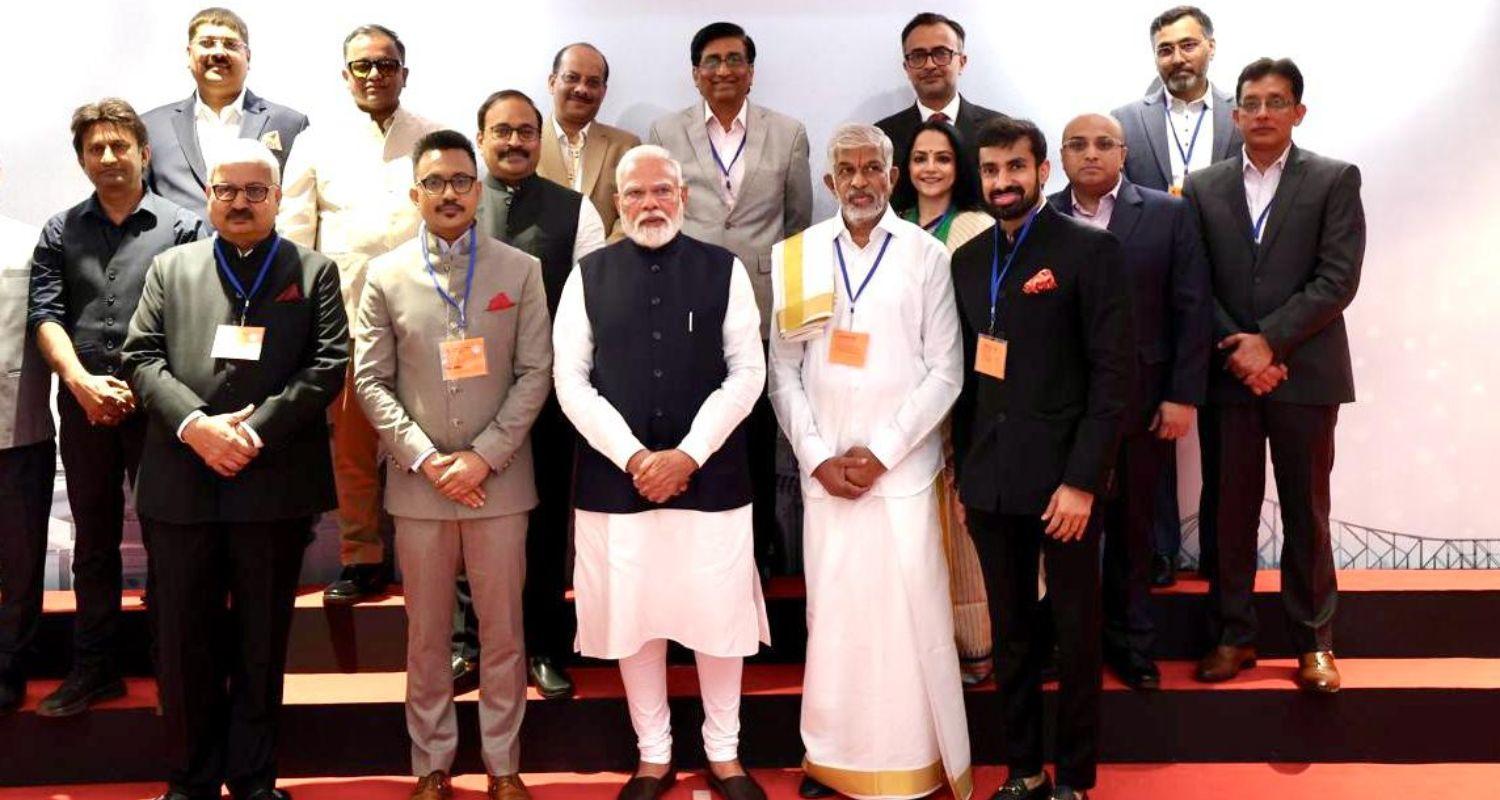The landscape of charitable giving in India transformed with the introduction of a new provision in the Finance Act, of 2023. This provision, while aiming to streamline regulations and ensure proper utilization of donated funds, sparked concerns among trusts and institutions engaged in charitable activities. The Central Board of Direct Taxes (CBDT) has proactively addressed these concerns by issuing a recent clarification, shedding light on the tax implications surrounding donations made between such entities.
 The Income Tax Act, of 1961, grants income tax exemption to specific trusts and institutions, including those registered under sections 12AA and 12AB, provided they meet certain conditions. This exemption allows them to utilize their resources more effectively towards their designated charitable or religious activities, contributing to various social and religious causes. These activities can encompass a wide range of initiatives, from providing education and healthcare services to underprivileged communities to promoting cultural and environmental preservation.
The Income Tax Act, of 1961, grants income tax exemption to specific trusts and institutions, including those registered under sections 12AA and 12AB, provided they meet certain conditions. This exemption allows them to utilize their resources more effectively towards their designated charitable or religious activities, contributing to various social and religious causes. These activities can encompass a wide range of initiatives, from providing education and healthcare services to underprivileged communities to promoting cultural and environmental preservation.
The Finance Act, of 2023, introduced a new provision impacting donations made by one trust/institution to another for charitable or religious purposes. As per this amendment, only 85% of such donations (excluding contributions towards the recipient’s corpus) would be considered applied for charitable or religious purposes. This change aimed to ensure that a significant portion of the donated funds are directly utilized for the intended charitable or religious activities, potentially preventing misuse or diversion of funds.
Following the implementation of the new rule, uncertainties arose regarding the tax treatment of the remaining 15% of the donation. The primary concern was whether this portion would be subject to taxation or still be eligible for the previously allowed 15% accumulation, considering the funds were already disbursed. This ambiguity created a sense of confusion and could potentially hinder the flow of funds between trusts and institutions engaged in charitable activities, thereby impacting their ability to fulfil their designated social and religious objectives.
Recognizing the need for clear guidance, the CBDT issued Circular No. 3/2024 on March 6, 2024. This circular explicitly clarifies the tax treatment of the 15% portion through the use of illustrative examples. This approach not only addresses the specific concerns raised but also provides a comprehensive and lucid understanding of the new regulation for both donor and recipient entities, ensuring transparency and facilitating informed decision-making.
The CBDT’s timely clarification plays a crucial role in ensuring transparency and facilitating informed decision-making within the charitable ecosystem in India. By providing clear guidance on the tax implications of donations under the revised framework, the CBDT empowers trusts and institutions to navigate the process effectively. This not only benefits both donor and recipient entities but also fosters a more efficient and responsible environment for charitable giving, allowing them to maximize their impact on the communities they serve.
While the CBDT’s clarification provides much-needed clarity, it’s important to note that tax regulations can evolve. It is recommended for trusts and institutions involved in charitable giving to:
- Stay updated on any future changes: Regularly checking for updates on tax regulations through government websites or professional publications can help them stay informed of any changes that might impact their operations and decision-making.
- Consult with tax professionals: Seeking guidance from qualified tax professionals can be especially beneficial for navigating complex situations or understanding the specific implications of the regulations on their unique circumstances. This proactive approach will ensure continued compliance with regulations and allow them to optimize their charitable giving strategies, maximizing their impact and fulfilling their social and religious objectives.




